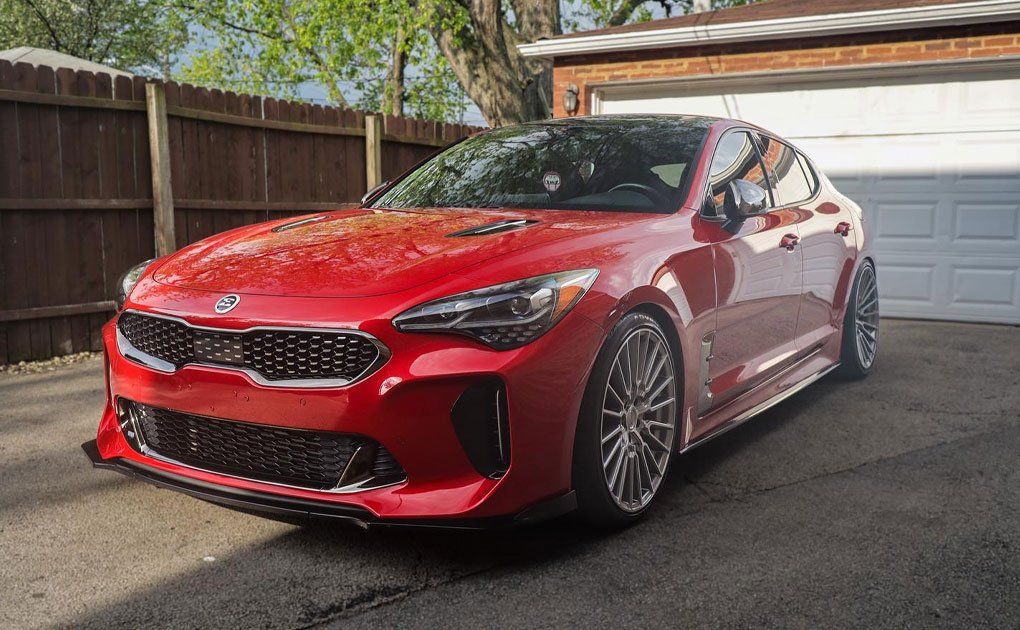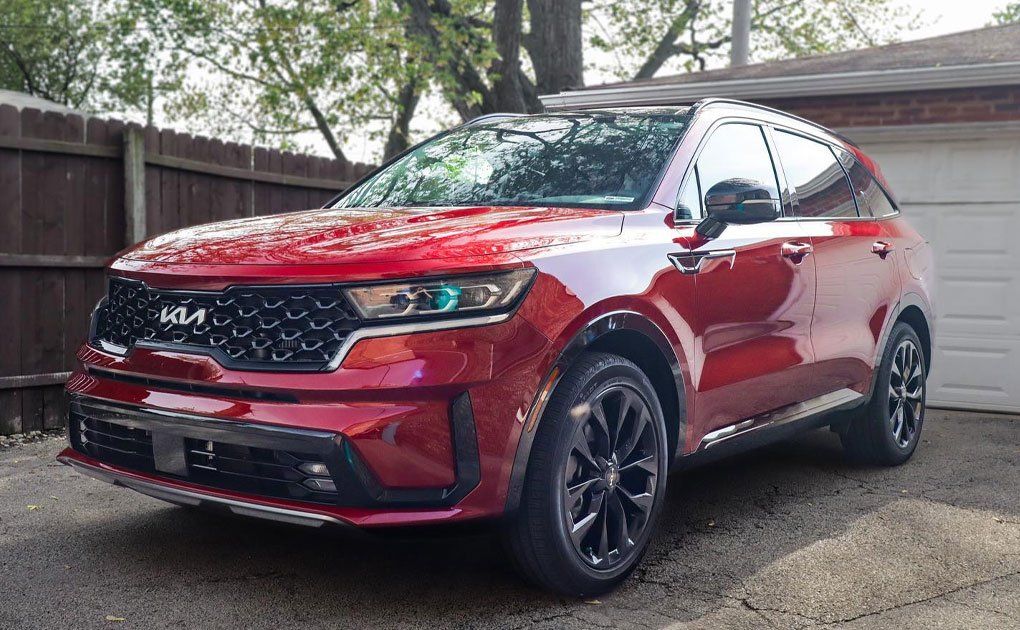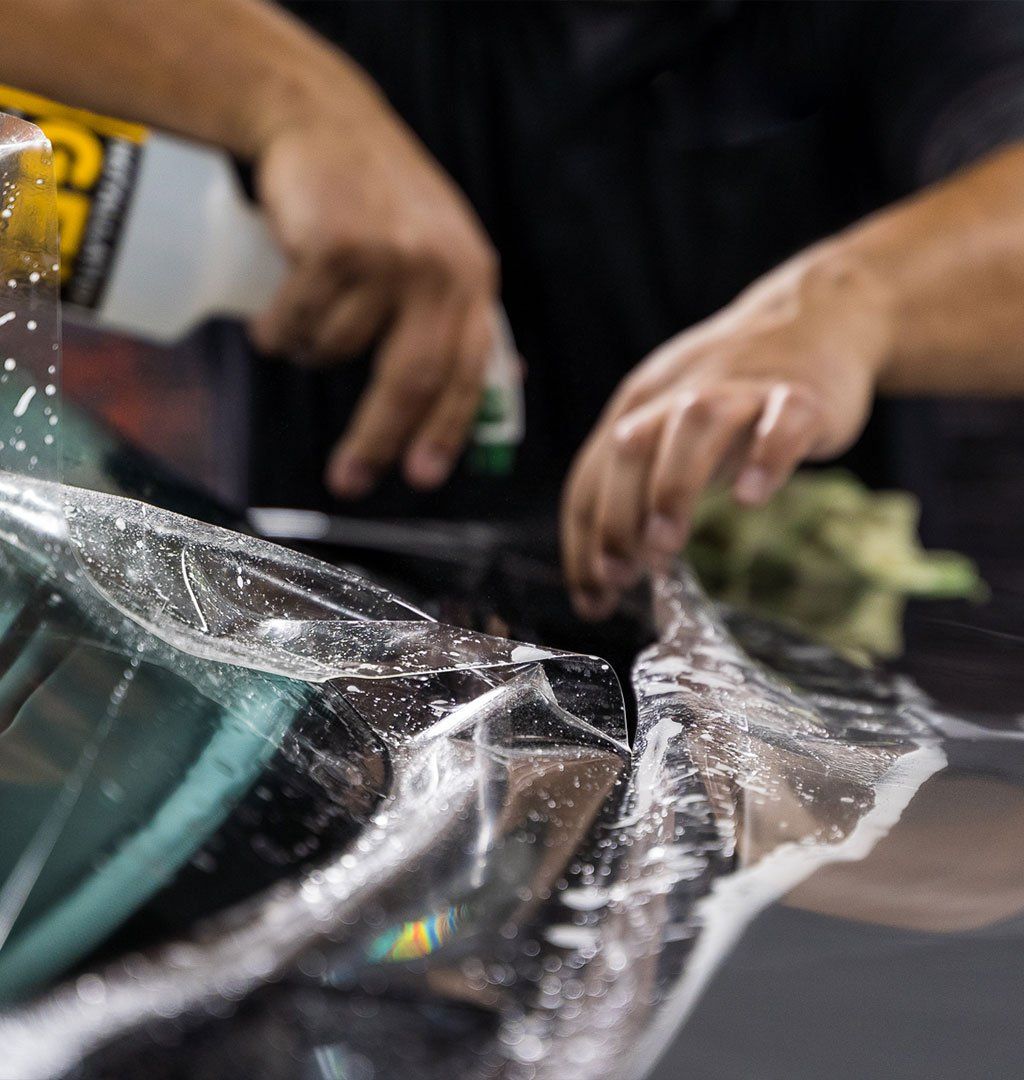Understanding the Impact of Long-Term UV Exposure on Paint Protection Film
CALL (708) 574-8496
GET A FREE ESTIMATEHave you ever admired a car glistening in the sun and wondered how they keep their paint looking so perfect? It’s not just luck; many vehicle owners choose to invest in paint protection film to shield their cars from damage. While this film acts as a barrier against scratches, chips, and harsh weather, one of its biggest enemies is something we often take for granted: UV rays from the sun. Long-term exposure to these ultraviolet rays can wear down this protective layer over time, leading to issues that could impact both the look and longevity of your vehicle.
Long-term UV exposure can significantly degrade paint protection film (PPF), leading to issues such as yellowing, brittleness, and a decrease in protective capabilities. To mitigate these effects, it is crucial to invest in high-quality PPF that blocks up to 99% of UV rays and to regularly maintain and inspect the film for any signs of damage.
Paint Protection Film and UV Exposure
Paint protection film serves as a valiant defender for your vehicle's paint, yet its effectiveness can wane significantly when subjected to prolonged UV exposure. The materials used in PPF, such as polymers and polyurethane, are particularly vulnerable to the relentless onslaught of ultraviolet rays. Research has shown that constant UV exposure can lower the structural integrity of these materials over five years. This signifies that after half a decade of sunbathing, what once was a reliable shield might resemble something far less reliable.
It’s important to recognize that this degradation involves a host of issues that could affect your car's longevity and aesthetic appeal. As time progresses, UV rays infiltrate the protective layers of PPF. This intrusion leads to the weakening of the underlying adhesive, which is key for keeping the film firmly attached to your automobile. When this adhesive becomes compromised, you may notice an unsettling brittleness in the film itself. Not only does this make it more vulnerable to cracking, but it can also lead to peeling off entirely, leaving your car unprotected and susceptible to unsightly blemishes from road debris or harsh weather conditions.
Many drivers have reported seeing their standard-grade PPF showing signs of wear within just 2-3 years of consistent exposure to direct sunlight. Lower-quality films tend to degrade faster, raising questions about their long-term viability for anyone who frequently parks outdoors or drives under intense sunlight. If you wish to extend the life of your PPF despite UV exposure, here are some recommendations:
- Invest in high-quality film: Opt for paint protection films with advanced multi-layer constructions that offer better resilience against environmental stresses.
- Utilize UV-resistant coatings: While these won't make your film invincible, they can significantly hinder degradation from UV rays.
- Regular maintenance: Frequent inspections and gentle cleaning using pH-neutral products can help maintain both clarity and performance.
Recognizing how different factors contribute to degradation provides valuable insights into protecting your vehicle’s exterior as well as choosing the right type of paint protection film for varying environmental challenges. This awareness will enable you to navigate future challenges relating to material durability more effectively.
UV-Induced Material Degradation
UV-induced degradation can significantly impair the efficacy of paint protection film over time. This breakdown occurs primarily due to ultraviolet radiation, which disrupts the chemical bonds that make up the material. As UV radiation penetrates deeper into the film, it degrades not just the surface but also the polymer chains within the PPF. Initially, you might not notice any significant impact, but as the film endures harsh sun exposure, it loses flexibility. The once-soft and adaptable film becomes brittle, limiting its ability to conform to your vehicle’s bodywork. Eventually, this brittleness manifests as cracks, peels, or complete failure of adhesion over time.
Paint protection film subjected continuously to intense UV exposure—such as that experienced in desert climates—could display micro-cracking within just 18 months. This early deterioration highlights how critical it is for car owners to consider their environment when selecting PPF for their vehicle. The impact of UV rays on paint protection film doesn't stop at visual blemishes. A significant percentage of residential and commercial users have noted performance dips in their PPF within three years under substantial sunlight. This leads many to rethink their maintenance strategies and installation choices.
Understanding how light interacts with these films enables responsible vehicle owners to take proactive measures to protect their investment. Simple habits like parking in shaded areas or using protective covers during long sunny periods can dramatically extend the life of your paint protection film, offering more peace of mind while cruising in style. Awareness and preventative care are essential in managing UV-related risks and preserving vehicles’ aesthetics for years to come.
Aesthetic and Functional Changes in PPF
Over time, the battle against UV rays takes its toll not only on the structure of paint protection films but also on how they look and perform. For many car owners, the investment in PPF is about preserving that pristine appearance.
- Yellowing and Fading: When yellowing and fading start rearing their heads, it can be discouraging. Imagine washing your car just to find that your once-vibrant finish now has a tinge of yellow. That’s a common scenario for owners opting for lower-grade PPF in sunny areas. Yellowing is often the first sign of paint protection film degradation, occurring as early as twelve months after installation. This change isn’t merely cosmetic; it signals that the vital UV protective layer is beginning to fail.
- Discoloration: The crucial link between UV exposure and color change stems from alterations in the film's chemical makeup. Each sun-soaked day acts as a little jab at the PPF layers. The more intense the sunlight, the more these layers struggle under pressure, leading to noticeable discoloration. It's remarkable how something as straightforward as UV rays can cause such profound changes over time. Users frequently share experiences of their vehicles losing vibrancy after prolonged sun exposure, prompting questions about whether they chose the right product.
- Adhesion Loss: While you're admiring your vehicle's shine from a distance, you might overlook an even greater threat: adhesion loss. This happens progressively due to continuous UV bombardment weakening the bond between paint protection film and your car's surface. Adhesion can diminish by up to 50% within three years in direct sunlight conditions. When adhesive strength dips like this, pieces of your protective film can begin to lift at the edges or peel away entirely.
Understanding these aesthetic and functional aspects empowers car owners to take proactive measures to preserve their vehicle's integrity while considering environmental factors that play a pivotal role.
Enhancing UV Resistance
To effectively combat the damaging effects of UV light on paint protection film, manufacturers have become increasingly innovative in their approaches.
- UV Inhibitors: One significant strategy involves the incorporation of UV inhibitors, which are special chemicals designed to absorb ultraviolet rays. This integration enhances the lifespan of paint protection film and helps maintain its clarity and protective capabilities over time. By adding these inhibitors directly into the film's makeup, companies create a robust barrier against the sun’s harmful energy, making it a smart choice for vehicle owners who want to protect their investment.
- Advanced Coatings: Another remarkable development in PPF technology is the introduction of advanced multi-layer coatings that offer exceptional UV resistance. These coatings can effectively block up to 99% of UV radiation, presenting a formidable defense against fading and oxidation. When selecting paint protection film, always prioritize products with these advanced properties; doing so ensures that your vehicle's exterior remains vibrant and aesthetically pleasing for longer.
- Regular Maintenance: Routine maintenance goes hand-in-hand with high-quality paint protection film. Maintaining your paint protection film is crucial for optimizing its UV-resistant properties. This involves conducting regular inspections to ensure there are no scratches or damaged areas on the film that could compromise its effectiveness. Moreover, using pH-neutral cleaning solutions is essential; harsh chemicals can degrade the protective qualities of your PPF over time.
Ensuring that these films remain clear and intact enhances their ability to resist UV radiation while prolonging their overall lifespan significantly. By committing to a regular maintenance schedule—typically involving a gentle wash every two weeks and a more thorough inspection every few months—you'll be fortifying your car's defenses against the sun's relentless fading effects. With these practices in mind, you can enjoy your vehicle’s original paint finish for many years while reaping the benefits associated with paint protection film.
Comparing PPF Brands and Technologies
Not all paint protection films are created equal; therefore, it’s important to compare brands and the technologies they employ.
High-Quality vs. Low-Quality PPF
Higher-end brands have established themselves as leaders in the industry thanks to their advanced polyurethane formulations and multi-layer technologies. These innovations provide superior protection against harmful UV rays and daily wear compared to lower-end brands that often settle for single-layer construction. This fundamental difference impacts the film's clarity and durability.
Professional Installation
One essential aspect of maintaining PPF performance lies in professional installation. It’s not merely about applying the film; professional installers ensure that every inch adheres properly, reducing potential weak points where UV rays could penetrate—like poorly adhered edges or annoying bubbles. According to industry experts, a poorly installed PPF can lose up to 30% effectiveness, meaning you might end up compromising on protection if you try to save a few bucks on installation.
To make an informed decision, consider investing in a reputable installer who understands the nuances of their products and knows how to maximize their benefits. This investment preserves your vehicle's aesthetic appeal and enhances its resale value by keeping its original paint in pristine condition. When evaluating different brands and technologies of PPF, remember that quality and proper installation are paramount. Understanding your options can pay off in protecting your vehicle from long-term UV damage while allowing its beauty to shine through unhindered.
Maintenance Tips for Longevity
Routine maintenance is essential for keeping your Paint Protection Film (PPF) effective and extending its lifespan. By inspecting, cleaning, and parking wisely, you’ll ensure your vehicle’s exterior remains shielded from environmental damage and maintains its visual appeal. Here’s a breakdown of important steps to preserve your PPF’s quality.
- Incorporate Routine Inspections: Regular inspections are a simple yet impactful way to prolong the life of your paint protection film. Take a few minutes every month to check for wear, such as cracks or discoloration in the film. Small issues like peeling edges should be promptly addressed, as they can quickly escalate into more significant damage. Just as you would not ignore a small leak, timely action on minor film problems can save both money and future hassle.
- Use pH-Neutral Cleaning Products: Cleaning your vehicle’s paint protection film with pH-neutral, non-abrasive products is crucial for preserving its integrity. Harsh chemicals can weaken the film's protective layer, making it more susceptible to UV damage. To keep your film in pristine condition, try washing your car biweekly with gentle, automotive-specific soap. Think of this routine as a spa treatment for your car—enhancing its appearance while protecting its paint.
- Practice Smart Parking Habits: Parking in shaded areas or using a reflective car cover can dramatically reduce UV exposure, benefiting the lifespan of your paint protection film. UV rays can cause premature aging in the film, so minimizing sun exposure is similar to wearing sunscreen on a sunny day. This simple habit preserves your vehicle’s appearance and helps maintain the strength of your paint protection film against weather and environmental elements.
- Combine Preventative Care with Quality Products: Using high-quality paint protection film combined with these care techniques creates a robust defense against UV and environmental damage. Regular checks, gentle cleaning, and strategic parking help ensure that your paint protection film remains effective over time. Much like nurturing any relationship through care and attention, investing in consistent upkeep will yield lasting protection and satisfaction.
By following these steps—routine checks, proper cleaning methods, and wise parking choices—you can extend the life of your PPF while preserving your vehicle’s aesthetic. A small investment in maintenance today leads to significant benefits and protection for your car in the long run.
Exceptional PPF Installers in Carol Stream, IL
Protect your vehicle's paint with precision and quality by trusting the
expert PPF installers at D’Andrea Auto Detailing in Carol Stream, Illinois. With our exceptional attention to detail and use of top-tier paint protection film, your car will enjoy superior defense against road debris, scratches, and environmental wear. Our professional team ensures a seamless installation that preserves your car's original look while providing long-lasting protection. Experience unmatched craftsmanship and protect your investment with D’Andrea Auto Detailing's PPF services today! Call us at (708) 574-8496 to get started!





